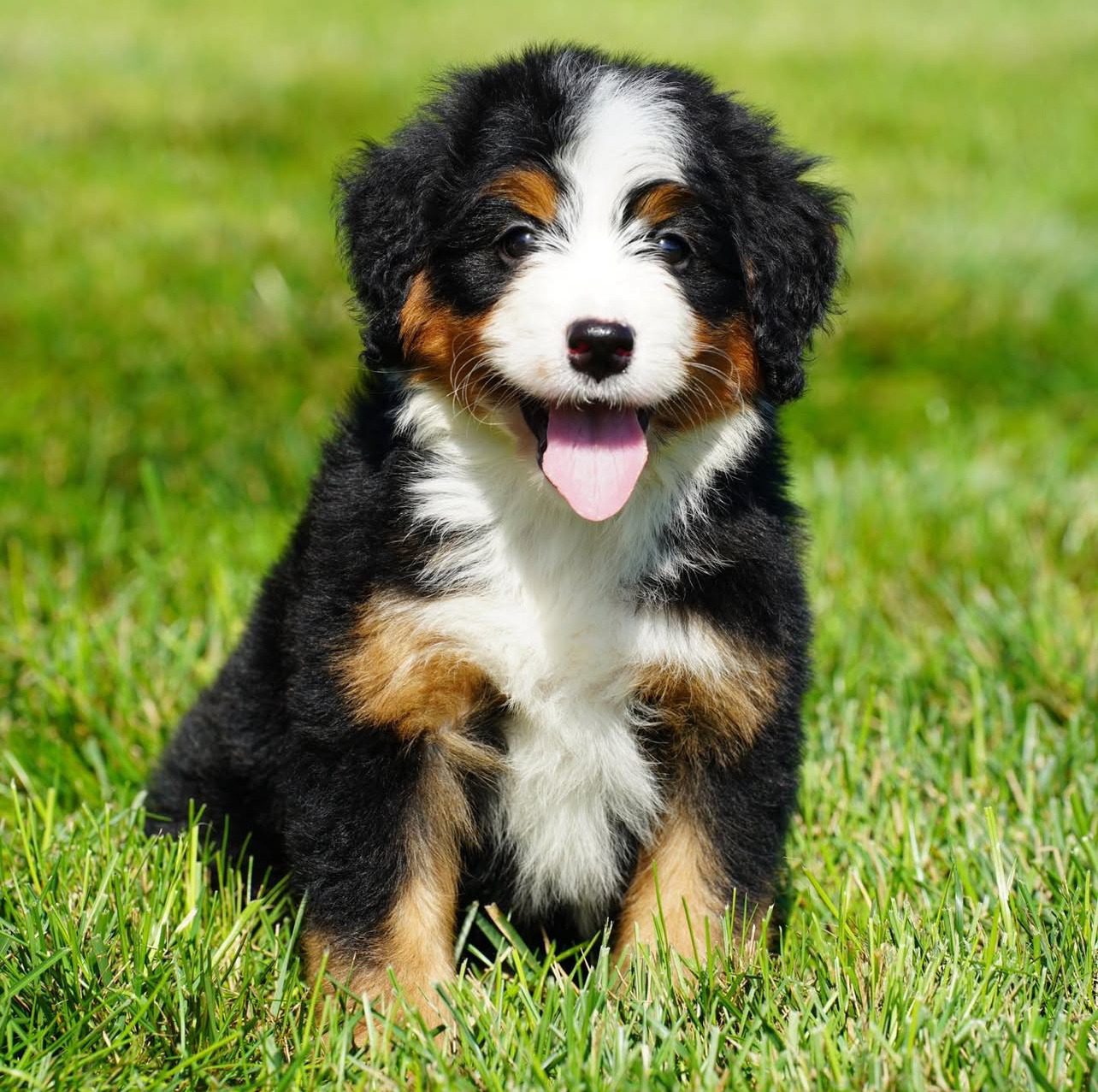About Zesta
| Availability |
|
| Gender |
|
| Age | 9 Weeks |
| Transfer of Ownership | Full Transfer |
| Champion Bloodline | Companion Bloodlines |
| Vaccination | Booster Shots |
| Mode of Shipment | Breeder or Seller Pickup/Delivery |
| Rabies Shot | Completed |
| Deworming | Completed |
| Microchip | Implanted |
| Veterinary Health Certificate | Issued |
| Health Guarantee | Money-Back Guarantee |
| Estimated Adult Weight | 4 lbs |
To reserve Zesta, a non-refundable $300 reservation fee is required. Secure your puppy today!
Reserve Zesta Today
Why we’re the leading puppy adoption service
Your Perfect Puppy
Breeds in every size, color, and temperament
Certified Breeders
Licensed, vetted and committed to our puppies
10-Year Health Commitment
Certified documents, vaccinations, and checkups
Handle with Care Delivery
White glove delivery options to bring your puppy home
Caring Experts
Helping you every step to find your perfect puppy
Maltese Breed Info
99% of breeding parents are OFA certified
Premium Teacup Puppies prioritizes health by ensuring that nearly all of their breeding parents (99%) are OFA certified, meaning each dog undergoes rigorous orthopedic evaluations to screen for hereditary issues before entering the breeding program. This proactive approach prevents potential health problems and supports the overall vitality of the breed, ultimately fostering healthier joints, happier lives, and stronger generations.

Puppy Parents with
CERTIFICATION

Puppy Parents with
GUARANTEE
Our Puppies come with 10 Year Health Guarantee
Health is at the heart of everything we do. That's why we offer a 10-year health guarantee on our puppies—a promise that goes beyond a simple policy. It reflects our commitment to long-term wellness, ensuring that every pup is backed by rigorous screenings and care long before any health issues arise. This guarantee is our proactive investment in a future where our puppies enjoy robust joints, vibrant lives, and the enduring vitality that supports strong generations.
What exactly is a ‘Teacup Maltese’? Is it an official breed variation? No, the American Kennel Club (AKC) only recognizes one Maltese breed standard (under 7 pounds, ideally 4-6 pounds). ‘Teacup’ is an unofficial marketing term used by some breeders for Maltese bred to be significantly smaller than this standard, often under 4 pounds.
How much smaller is a ‘Teacup’ Maltese typically compared to the standard? While the standard aims for 4-6 pounds, puppies marketed as ‘teacups’ are usually advertised to mature at under 4 pounds, sometimes even as little as 2-3 pounds. Size can vary, and such extreme smallness carries major health risks.
Are Teacup Maltese prone to specific health issues due to their tiny size? Yes, significantly. They are at higher risk for hypoglycemia, fragile bones, open fontanels (soft spots on the skull), hydrocephalus, heart defects, liver shunts, collapsing trachea, respiratory problems, and severe dental issues in their miniature jaws.
Do Teacup Maltese have the same temperament as standard Maltese? They should ideally share the gentle, playful, and affectionate nature of the standard Maltese. However, their extreme fragility can make them prone to nervousness, fearfulness, or trembling if not handled with exceptional care. They can also develop “Small Dog Syndrome” if not properly trained.
Is grooming a Teacup Maltese different from grooming a standard Maltese? The coat care itself is the same: their long, white, single coat requires daily brushing to prevent mats and regular professional grooming. However, handling during grooming must be incredibly gentle due to their delicate structure. Tear stain management is also crucial.
How much exercise does a Teacup Maltese need? Very little structured exercise is required. Short, gentle indoor play sessions and perhaps very brief, careful walks on a harness (never a collar that pulls on the neck) are sufficient. Overexertion and rough play must be avoided.
Are Teacup Maltese particularly fragile? Yes, extremely so. Their bones are incredibly delicate and can break easily from falls (even off low furniture), being stepped on, or rough handling. They require a very protected environment.
What is the average lifespan of a Teacup Maltese? Unfortunately, due to the significant health problems often associated with breeding for extreme miniaturization, their lifespan is frequently shorter than the 12-15 years expected for a healthy, standard-sized Maltese.
How often should I feed a Teacup Maltese puppy? Frequent small meals are absolutely essential to prevent life-threatening hypoglycemia (low blood sugar). Young puppies may need feeding every 2-4 hours. Consult your vet for a specific feeding schedule and appropriate high-quality food.
Are Teacup Maltese good pets for families with young children? Generally, no. Their extreme fragility makes them unsuitable for homes with young children who might accidentally drop or handle them too roughly. They are better suited to adult-only homes or families with very gentle, older, supervised children.
Do Teacup Maltese bark a lot? Like many small companion breeds, Maltese can be prone to alert barking. Teacup versions are no different. Early training can help manage excessive barking.
How much does a Teacup Maltese puppy typically cost? Prices are often very high, frequently ranging from $2,500 to $6,000 or even more, due to the “designer” or “rare” marketing. This high cost does not guarantee health or ethical breeding practices.
Are Teacup Maltese difficult to house train? Very small breeds can sometimes be more challenging to house train due to their tiny bladders and the difficulty in detecting small accidents. Consistency, patience, and positive reinforcement are key, possibly combined with potty pad training.
Why do reputable Maltese breeders advise against ‘teacup’ sizes? Responsible breeders prioritize the health, longevity, and temperament of the breed according to the official standard. They understand the serious health complications and ethical concerns associated with deliberately breeding dogs below a healthy size threshold.
Are Teacup Maltese more prone to dental problems? Yes, fitting a full set of teeth into an abnormally small jaw often leads to severe overcrowding, misaligned bites, retained baby teeth, and a higher incidence of periodontal disease. Diligent dental hygiene is crucial from a young age.
Do Teacup Maltese suffer from tear staining like standard Maltese? Yes, tear staining is very common in Maltese due to facial structure and their white coat making it highly visible. Regular, gentle cleaning of the eye area is necessary to manage stains and prevent irritation.
Can Teacup Maltese travel easily? Their tiny size allows them to fit easily into carriers for travel, including in-cabin air travel. However, owners must ensure the dog is comfortable with travel and take precautions regarding their fragility and potential health sensitivities during transit.
What should I look for if considering a very small Maltese? Seek reputable breeders affiliated with the American Maltese Association (AMA) who health test their breeding dogs. Focus on finding a healthy puppy that happens to be naturally on the smaller end of the *standard* (e.g., closer to 4 lbs) rather than seeking out a breeder specifically advertising unhealthy “teacup” sizes.
Do Teacup Maltese get along well with other pets? With careful introductions and supervision, they can potentially live with other calm, gentle pets. However, interactions must always be monitored closely, as even playful larger pets could easily injure them accidentally.
Do Teacup Maltese have ‘open fontanels’? What does that mean? It’s relatively common in extremely miniaturized dogs. The fontanel is the soft spot on the top of the skull, similar to a human baby’s. In healthy dogs, it closes as they mature. An open fontanel in an adult or older puppy leaves the brain vulnerable to injury and can be associated with neurological issues like hydrocephalus.




































